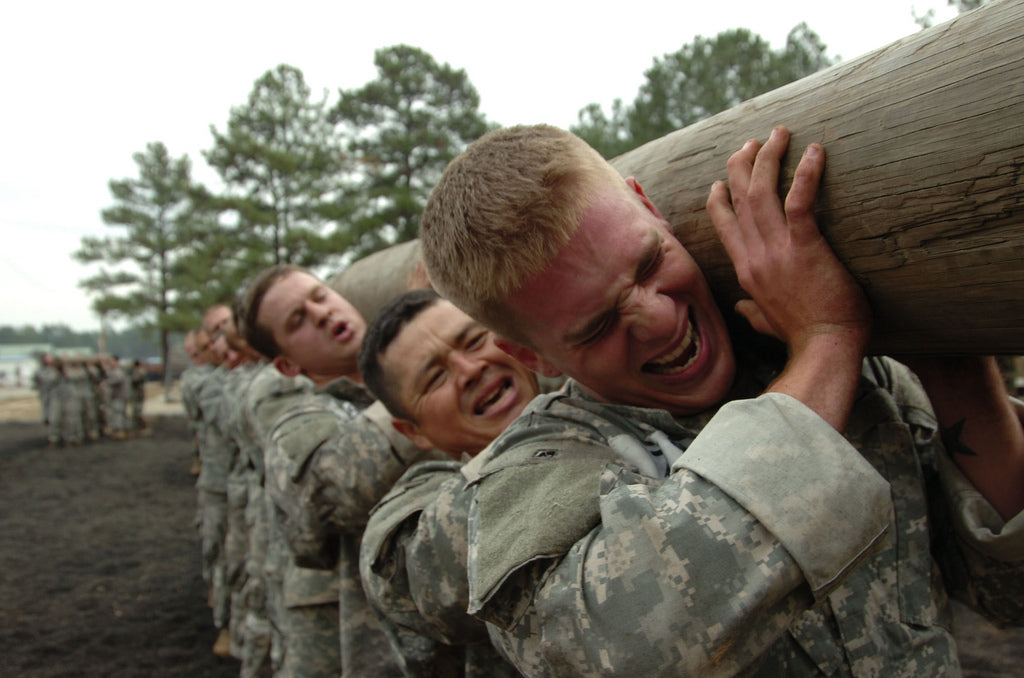Just about anyone who endures a selection course will come out a little worse for the wear. Some injuries are simply from overuse and will heal with proper rest and recovery practices. However, there are certain things to watch out for that could indicate a more severe injury is lurking.
I know, because I’ve been on the receiving end with several operators over the years whose injuries could have cost them a career. During my time as a physical therapist at Marine Special Operations Command, I worked with Raiders to keep them fit, ready, and durable. I’ve have the privilege of being able to serve through the lifecycle of a number of operators - from the wee hours of assessment and selection to the day they signed their DD 214.
I remember a guy who stopped into my office within minutes of stepping off the bus from the field. I was on my way out of the office when he casually strolled in and nonchalantly asked, “Hey, can you take a look at my elbow? Something seems off.” It sure was. He had dislocated his elbow over a week before - meaning that the bones were not aligned and a deformity was clearly present. He had fallen in a ravine wearing a 110lb pack and had braced for impact on that arm. He was able to push through the course by dressing carefully and carrying his weapon with a bent elbow at all times.
This story has a happy ending, as we were able to get him the right care and he went on to do great things without disability. However, had the dislocation advanced just one centimeter more, he likely would have sustained permanent nerve damage, effectively ending his chances of ever gripping a weapon with precision again. He got lucky. But just one celebratory high five for passing the course could have been the end of his career as an operator. In sports, an elbow dislocation is an urgent matter, with trainers and doctors scrambling to correct the problem within hours. But gutting it out with a serious injury for over a week? That’s just a Marine for you.
So, while plenty of “suck it up” is necessary to pass selection, it’s how you take care of yourself afterwards that can make all the difference in just how long you’ll last in the job. In this article series, I will highlight a few common injuries that, in rare cases, are actually something else. If you experience any of these warning signs, you should seek the consultation of a qualified healthcare professional who regularly treats injuries in sport and tactical athletes.
In Part 1 of this series, we’ll take a look at common injuries that affect the shoulder region and provide recommendations regarding treatment. This information is for your education and should not take the place of an appropriate evaluation by a licensed healthcare provider.
Shoulder Blade

Muscle Strain
Muscle strains in the neck and upper back are very common during events that involve sustained positions and carrying heavy packs. The muscles most commonly affected include the trapezius and levator scapula. These muscles connect from your neck to your upper shoulder blade, so pain can be felt in either area.
Strains can heal on their own within two to three weeks, but continued activity is a common cause of lingering issues because the tissue may never fully heal. Self-treatment includes ice for pain, heat for stiffness, trigger point massage, and gradual muscle stretching.
Pinched Nerve
A pinched nerve in the neck area—also known as cervical radiculopathy—can mimic a muscle strain because the nerves control those same muscles. A nerve can be pinched anywhere along its pathway, but is usually compressed by a disc is the neck or a muscle in the shoulder area.
Sometimes, a set of specific exercises is all that is necessary to alleviate the pressure causing a pinched nerve. The particular exercises that are best for you will vary depending on which nerve is pinched, so it’s important to seek the advice of a physical therapist. Manual therapy that works to heal the muscles and joints around the nerve can also be helpful.
Pack Palsy
Pack palsy—also known as backpacker’s palsy or rucksack palsy—is an injury to a bundle of nerves called the brachial plexus. The straps of the pack compress the nerves and the weight of the pack pulls down on the shoulders, in turn stretching the nerves beyond their tolerance. In our experience, pack palsy begins with pain in the traps or shoulder blade and feels similar to a muscle strain (as the nearby muscles attempt to compensate and hold up the shoulder).
The key signs of pack palsy are a progressive loss of ability to raise your arm or grip firmly. This is not an injury to self-treat because, in some cases, pack palsy can cause permanent nerve damage. While icing the shoulder blade and trap muscle early can help, it’s extremely important to see a qualified healthcare professional as soon as possible to undergo muscle and nerve testing and start a rehabilitation program.
Shoulder Joint

Shoulder Impingement
Shoulder impingement is an umbrella term for a pinched rotator cuff muscle in the shoulder joint. Unfortunately, there are several structures that can pinch the muscles, so there is no specific exercise protocol that works for everyone.
In general, after selection, any exercises you can do to stretch your chest muscles and pull your shoulders back (like dumbbell rows) will likely be of benefit. If your shoulder pain does not subside within two to four weeks after selection, consider seeing a physical therapist or other healthcare professional who specializes in treating shoulder injuries in sport or tactical athletes.
Rotator Cuff Strain
The rotator cuff is a group of muscles that provide stability to the shoulder socket. Carrying heavy loads and performing significant amounts of overhead activity can fatigue the muscles, leading to small tears in the fibers. The pain of a rotator cuff strain is often felt deep in the shoulder socket, but sometimes it feels like a dull ache on the outer surface of your shoulder instead.
Rotator cuff strains usually heal within two to three weeks and can be self-treated with ice for pain, heat for stiffness, trigger point massage, and gradual muscle stretching. It’s normal to feel weakness when lifting heavy objects, but if you can’t lift your arm, or if you start to feel increased pain at night when you roll onto that shoulder, see a qualified healthcare professional to ensure that the muscle is not seriously torn.
Labrum Tear
The labrum is a rubbery ring that serves as an attachment site for structures that support the ball-and-socket shoulder joint. The labrum can be torn when the rotator cuff muscles are injured or are unable to stabilize the joint, or when the shoulder sustains direct trauma. You may feel pain in the biceps tendon along the front of the shoulder, or feel that the shoulder will slip out of place when maneuvered into certain positions.
Some labral tears require surgery, but most do well with a rehab program. As someone who is physically active, it’s important to be evaluated by a qualified healthcare professional if you suspect you’ve torn your labrum as it’s rarely an isolated injury.
The strenuous nature of selection can create many injuries that will heal on their own with proper rest and recovery. But some injuries won’t simply go away with time. Our objective for this article is not to cause alarm, but to inform. Many of our clients have an incredible ability to push through pain. As a result, more severe problems may not be apparent until they cause serious injury.
Stay tuned for Part 2, in which we’ll switch gears and highlight several lower body injuries commonly sustained during selection courses (and outline what you can do to care for them).
Dr. Rita Chorba is a physical therapist who specializes in helping tactical athletes maintain career (and life) longevity. She transitioned from a career working with athletes at the University of Arizona to the Marine Special Operations community aboard Camp Lejeune. She is currently in private practice in Jacksonville, NC and writes for the Marine Raider Patch magazine and her blog at www.alphapnr.com.
[nutrition-ad]






Leave a comment
This site is protected by hCaptcha and the hCaptcha Privacy Policy and Terms of Service apply.